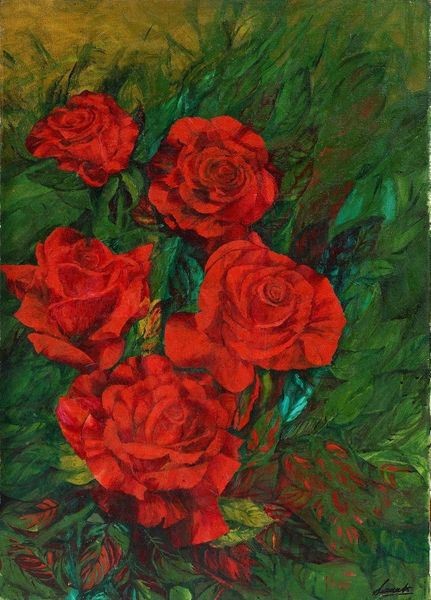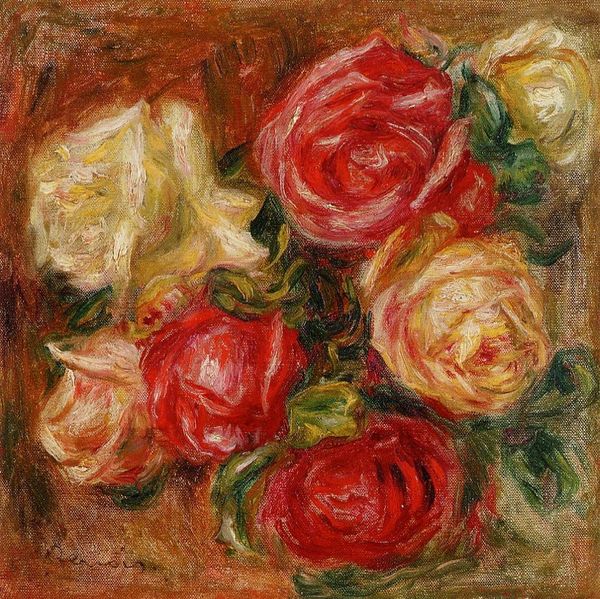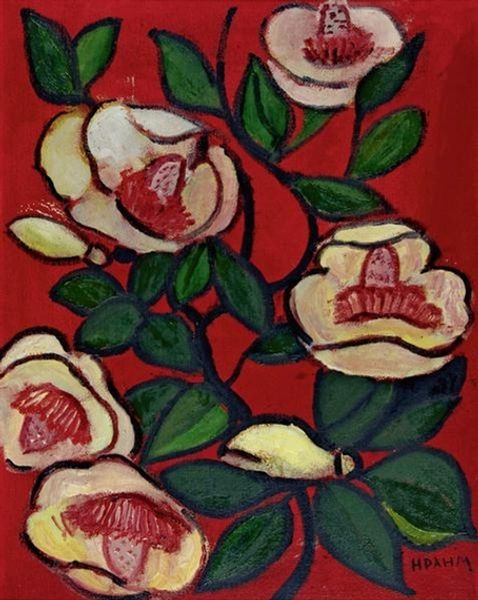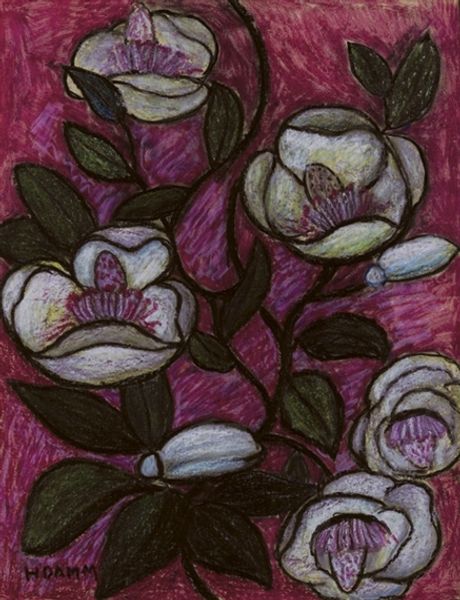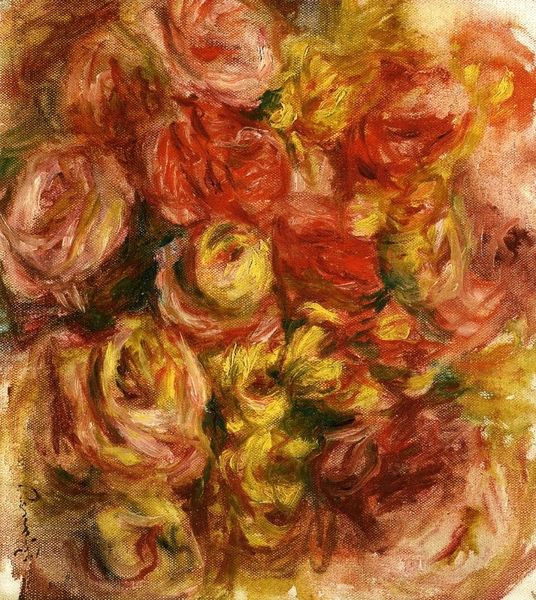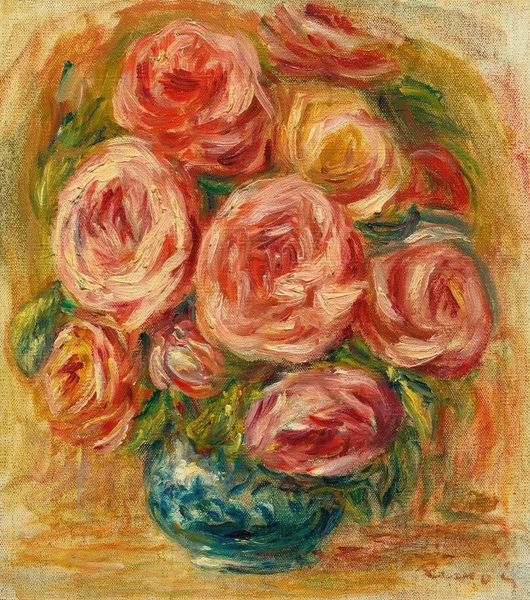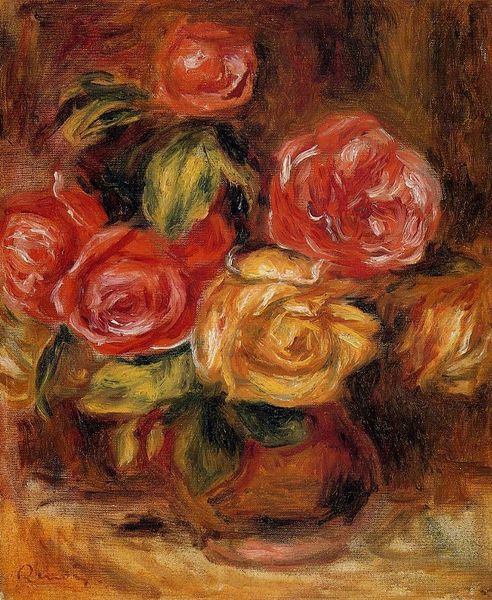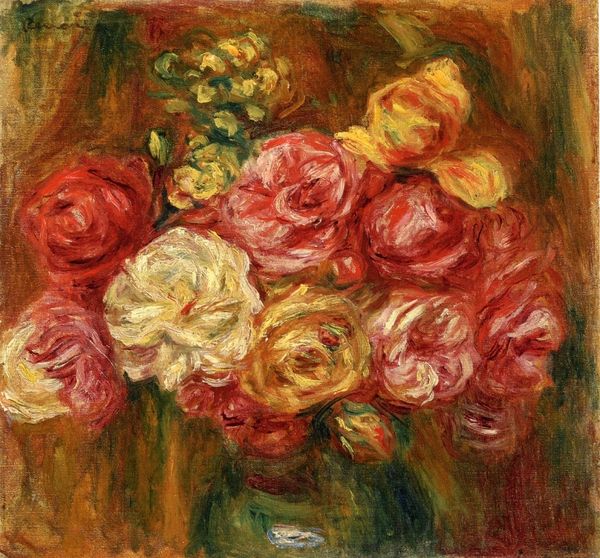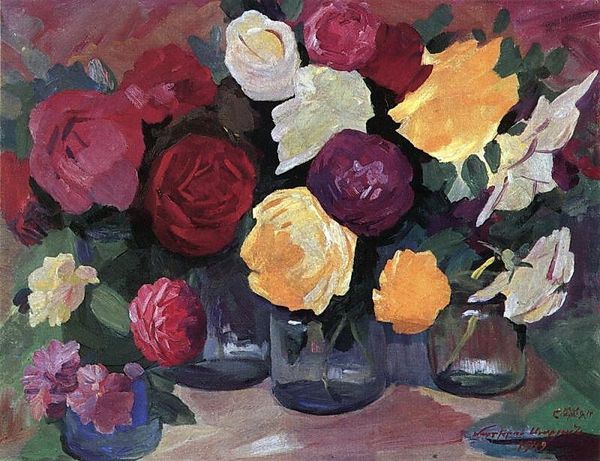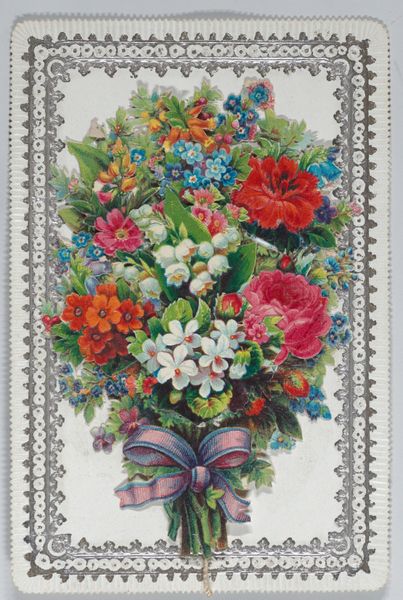
painting, oil-paint
#
garden
#
natural stone pattern
#
naturalistic pattern
#
abstract painting
#
painting
#
oil-paint
#
flower
#
handmade artwork painting
#
oil painting
#
plant
#
realism
Copyright: Małgorzata Serwatka,Fair Use
Curator: I'm fascinated by Małgorzata Serwatka's "Roses IV." While undated, its handling of oil paint and depiction of flowers immediately captures attention. Editor: It’s interesting how the artist renders such a traditionally romantic subject—roses—in what feels like a very direct, almost unadorned way. What strikes you most about this painting? Curator: What stands out is how the artist uses the materials to flatten the image. The texture of the paint, and the way it’s applied, seems almost more important than achieving perfect botanical accuracy. Think about the social context: were commercially produced paints easily available? The brushwork seems deliberate, highlighting the labor involved, making the act of painting almost as central as the image itself. What do you make of the thick border around the canvas? Editor: It makes the painting seem more like a decorative object, blurring the line between high art and something crafted for the home. Almost as if the roses are arranged for someone in particular. Does that domestic setting change how we interpret the painting? Curator: Absolutely. It moves us beyond just aesthetic appreciation. We begin to consider the societal values around domesticity, labor, and even consumption. What did owning such a painting mean during the time it was created? How does the access to the raw material and techniques of paintings factor into who might commission such art? It invites us to examine those dynamics. Editor: So, beyond simply admiring the roses, we are asked to think about the who, how, and why of its creation. Thanks, I learned a lot! Curator: Exactly! Thinking about the materiality of art makes us understand its place in the world a bit better.
Comments
No comments
Be the first to comment and join the conversation on the ultimate creative platform.
